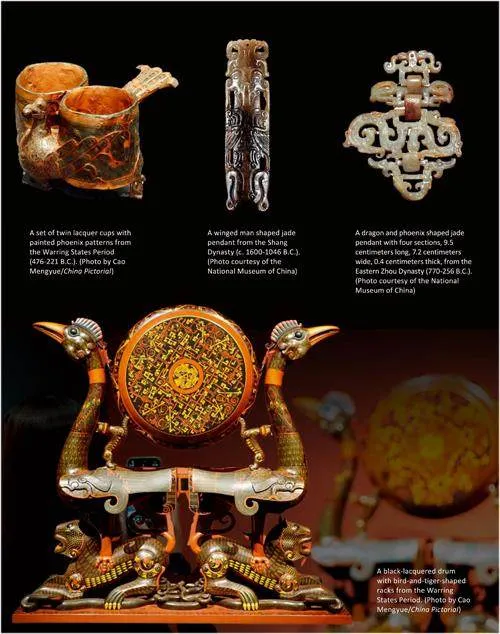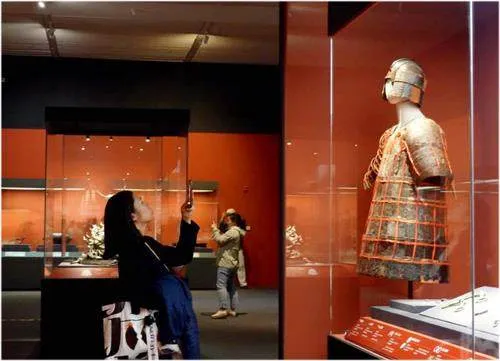Phoenix Kingdoms: Enduring Splendor of Bronze Age China





In the early days of theZhou Dynasty (1046-256B.C.), a series of vassalstates were establishedin the middle reaches of theYangtze River. The Zeng andChu states that flourished onthe Jianghan Plain composed abrilliant chapter of China’s lateBronze Age through splendidculture.
On September 14, 2024, theexhibition “Phoenix Kingdoms:The Last Splendor of China’sBronze Age” kicked off at theNational Museum of China inBeijing. It features more than200 precious cultural relicsfrom five major museums inHubei Province. Together, theypresent the distinctive style and craftsmanship of bronze, jade,lacquer wares, and textile worksof the ancient Zeng and Chustates.
The tomb of Marquis Yi ofZeng, a ruler of the ancientZeng State, was accidentallydiscovered in Suizhou, centralChina’s Hubei Province, in May1978.
“An astonishing collectionof burial objects were foundin his tomb including a roundpan-zun (cooler and wine vessel)set, a double-walled squarejian-fou cooler, and a bronzeantlered crane,” reported ZhangXiaoyun, director of the HubeiProvincial Museum. He regardsthese relics with complex anddelicate patterns and ingeniousand unique designs as thehighest level of craftsmanshipof bronze casting technologyduring the Warring StatesPeriod (476-221 B.C.).
Various unearthed arttreasures significantlyshowcased the long historyand exquisite crafts of theancient Zeng and Chu statesincluding the bronze jiangu(large mounted drum) baseknown as the “pinnacle ofbronze casting technology,” theexquisite bronze jian-fou , thebronze antlered crane standingwith head up, the world-famousbronze sword of Zhougou, andthe embroidered silk gauzefragment with coiled-dragon,flying-phoenix and tigerpatterns.
The bronze jiangu base witha complicated shape and uniqueaesthetic style transcendingthe times has attracted a steadystream of visitors. Measuring50 centimeters in height and80 centimeters in diameter, thedrum base is composed of eightpairs of big dragons and dozensof entangled small dragonsinlaid with turquoise. “Thedrum base was not cast in onego, but in sections and weldedtogether, so they were extremelydifficult to combine after beingdivided into fragments,” saidChen Keshuang, curator andassociate research librarian atthe National Museum of China.
Phoenix images can be foundthroughout the exhibition.As one of the most importantsacred animals in Chineseculture, the phoenix waswidely worshipped in theShang (c. 1600-1046 B.C.)and Zhou dynasties. Manymysterious and vivid images ofphoenixes were found on thebronze, lacquer, and jade waresas well as silk fabrics unearthedfrom archaeological sites of theancient Chu state. The phoenixis also an important totem forJingchu culture, symbolizingthe innovative, perseverant andhardworking spirit of Jingchuancestors.
Since the discovery of thetomb of Marquis Yi of Zeng,major archaeological discoverieshave emerged one after anotheron the land of the JianghanPlain over the past 40 years.In addition to bronze wares,many jade artifacts, lacqueredwood wares, and silk fabricsunearthed in the region havealso shined light on the socialetiquette system, folk customs,and handicraft developmentback then.
“Presenting thebrilliance, exquisiteness, andluxury of the two ancientsouthern kingdoms, theexhibition ref lects the latestarchaeological academicachievements,” said Zhang.

